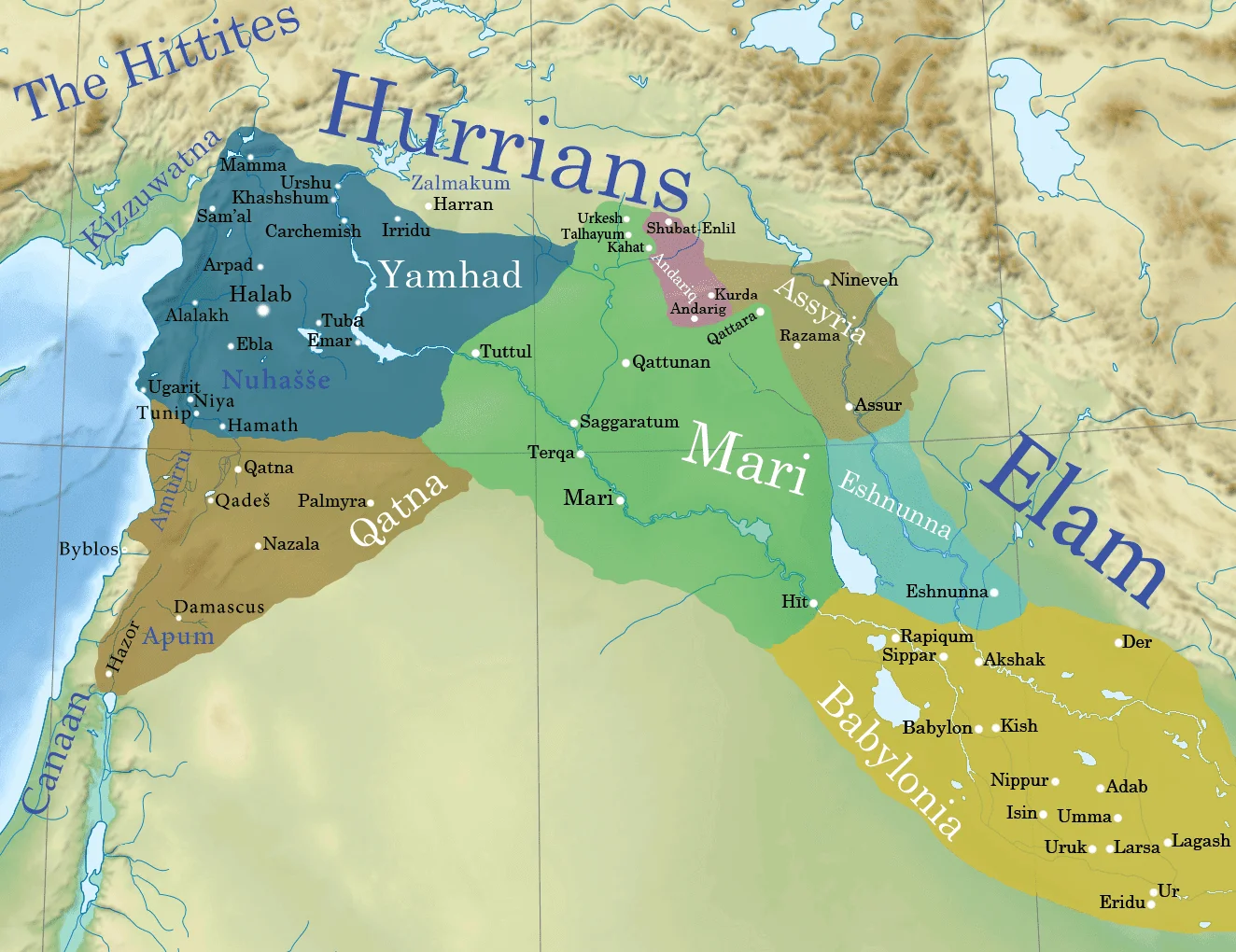Qatna, also called Katna is an archaeological site located near the village of al-Mishrifeh in the Homs Governorate of Syria.
Qatna was inhabited by various Bronze age cultures, most notably the Amorites, an ancient Semitic-speaking people from Syria who also occupied large parts of southern Mesopotamia, followed by the Arameans and then the Hurrians.
Qatna was built on a limestone plateau on the shores of the Mishrifeh Lake (that dried up during the end of the Bronze Age), surrounded by large rampart walls reaching 18 metres in height. The city contained several palaces, temples, a necropolis, public buildings, and dwellings.
The earliest evidence of settlement dates from the Late Chalcolithic IV period around 3300-3000BC. By the Early Bronze Age IV, Qatna had grown into a city covering an area of 62 acres centred on the acropolis, with a densely populated residential precinct and an industrial complex for processing grain with a large multi-roomed granary.
By the Middle Bronze Age I (2000 BC), Qatna had established itself as a Kingdom, bordered by the Yamhad to the north, the Mari to the East and the Canaan to the south. The Kingdom centred on the city of Qatna, which had become a metropolis and trading hub, covering an area of 270 acres.

After the death of King Shamshi-Adad I in 1775 BC, Qatna’s Kingdom begun to fracture due to the hegemony of the Yamhad dominating the trade routes connecting Qatna to Mesopotamia and the Mari. The Yamhad invaded the Kingdom in the late 17th century, with growing Egyptian and Mitannian (a Hurrian-speaking state in northern Syria and southeast Anatolia) influences causing Qatna’s political and economic importance to rapidly decline.
By the 16th century BC, Qatna was a Mitannian Vassal which brought the state into conflict with the Egyptians. With the threat of the Hittites invading from the north, a treaty was agreed between the Mitanni and the Egyptians that divided the Levant between the two superpowers, further reducing the Kingdom’s status and size.
This in no way stopped the expansion of the Hittites, who waged several campaigns into Matanni lands west of the Euphrates. Although debated amongst academics, one theory proposes that Qatna became a vassal to the Hittites under the reign of King Idanda during the middle of the 14th century BC.

In retaliation, the Mitannian King Tushratta invaded Qatna and destroyed the royal palace. Another theory proposes that the city fell during the campaigns of the Hittite king Šuppiluliuma I, as supported by a contemporary account in a clay cuneiform tablet between the Qatna Prince Akizzi to the Egyptians that said:
And now, the King of Hatti [land of the Hittites] has sent Aitukama [a vassal of the Hittites] out against me, and he seeks my life… May my lord send him… that he may come against Aitukama so that my lord…he may fear your presence… My lord, if he makes this land a matter of concern to my lord, then may my lord send archers that they may come here. Only messengers of my lord have arrived here… I do not fear at all the presence of the archers or my lord, since the archers belong to my lord.
Qatna was destroyed around 1340 BC and would not be re-occupied until the late 10 century BC. At this time, the region was probably under the control of Palistin, with Qatna under the rule of Hamath, which was probably part of Palistin (an early Syro-Hittite kingdom that emerged in Syria after the Late Bronze Age collapse). Over the centuries, the site would shrink due to further invasion and annexation, until its complete abandonment in the mid-6th century BC
Header Image Credit : Bertramz – CC BY-SA 3.0







